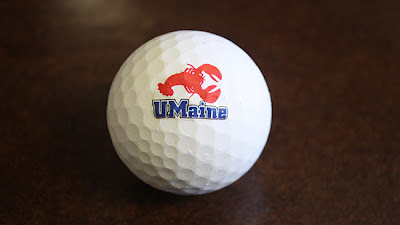The shells from Maine's lobsters are being used to manufacture decorative tiles, trivets and drinking-glass coasters.
Want Not, Waste Not as lobster shells are being used in counter-tops and tabletops.
Even at the University of Maine, a professor has developed golf balls and plant pots made out of ground-up lobster shells.
"Instead of dumping the shells at landfills, the idea is to add value to the product, which hopefully will funnel back into the industry," said David Neivandt, a professor of chemical and biological engineering who created a biodegradable golf ball with a core made of lobster shells.
Tons of lobster shells are thrown out and industry leaders have long wondered if there might be a way to make money from the shells that are tossed.
Neivandt and one of his students, Alex Caddell have developed a golf ball using ground-up lobster shells mixed with a glue-like substance for its core.
But they wont give out specifics because they don't want to give away any secrets. The ball is the same size and weight as a standard golf ball but is intended for use on cruise ships or at driving ranges that are on lakes or the ocean.
Putting golf balls into the sea is against the international convention rules because they are made of plastic and won't break down, but the lobster golf ball is biodegradable and disintegrates in the water in about three weeks.
EcoSeaTile LLC, a company based in Mount Desert, has been making tiles of reclaimed lobster, mussel, clam, oyster and scallop shells for use in homes and businesses, selling at dozens of high-end tile shops in New England and New York.
Owner Mickey Shattow said the tiles seem to be most popular among customers who live on or near the ocean.
